Recruitment Definition
Recruitment and selection is a process to attract, recruit and retain the right people with the right competencies at the right time.
Recruitment Objectives
The custodian of the recruitment process will have the following objectives:
- To be attuned at attracting and retaining a first line manager with the required competencies (skills, knowledge, and behaviour) and attitude.
- To supply a number of potential employees for selection.
- To ensure a continuous supply of high-quality human material to meet the organisations immediate and future human resource needs.
- To be attuned to establish a positive image of the organisation as an employer in the labour market.
- To recruit in line with relevant legislation or policy.
- To reduce turnover and recruit within the shortest period of time.
The Recruitment Process
A best practice recruitment process would be an integrated set of activities/actions that is followed in chronological order according to a pre-determined set of standards. Such a process should ensure that the appointee is the best fit for the position.
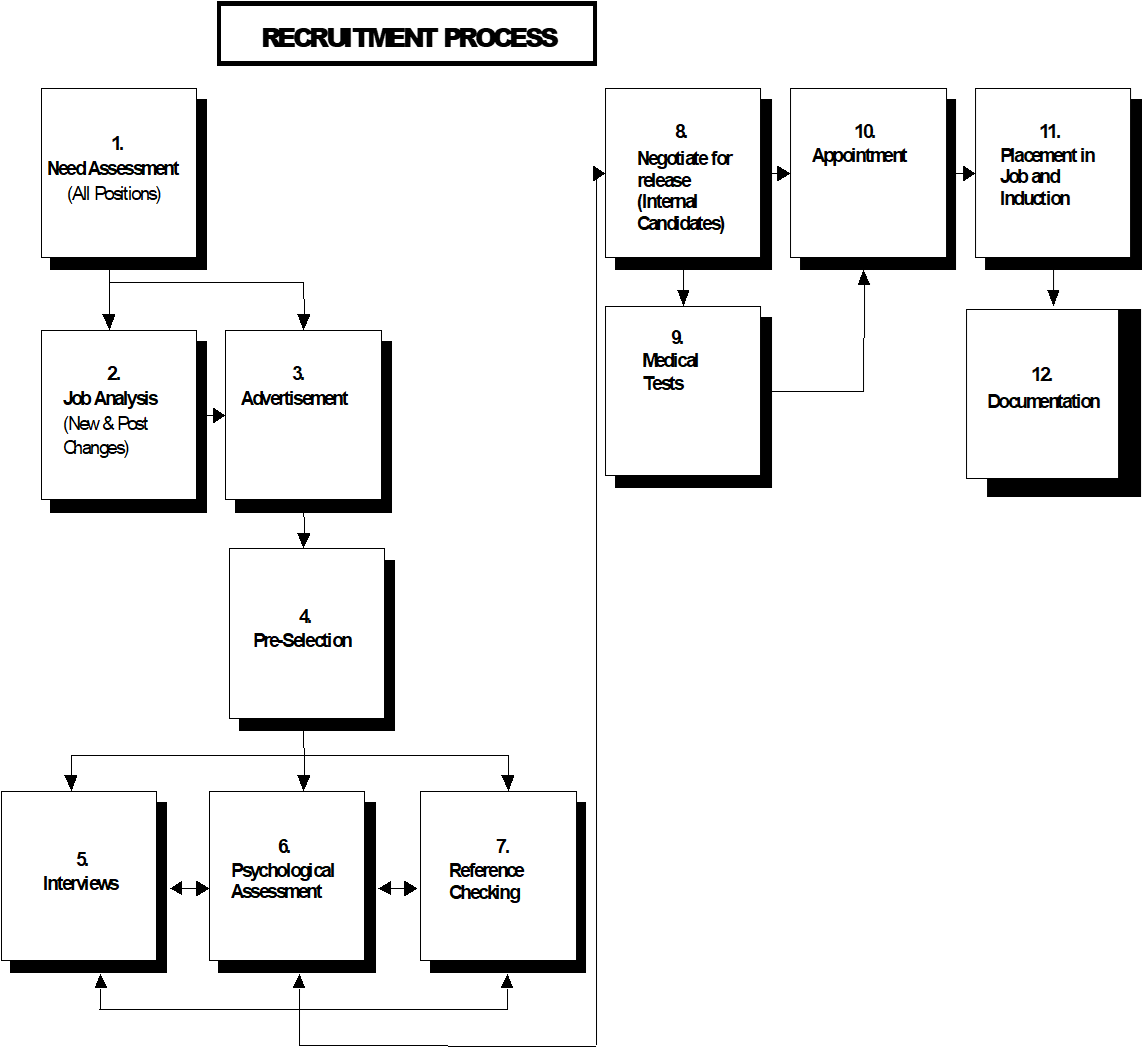
For the purposes of this Unit Standard (252035) we will pay attention only to steps 1 – 4.
Needs Assessment
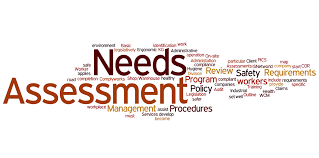
Objective: To determine the need for a position in support of the organisational strategies.
Benefits of a detailed needs assessment:
- You will be able to ensure that staff is recruitment in support of the bigger organisational strategy.
- Reliable information is available to base the recruitment process on.
- Future staffing needs are considered, and retrenchment downscaling can be prevented.
- Workforce planning is enhanced.
Steps to be Followed
|
1 |
Line management identify need for position and forward to HR |
|
2 |
HR analyse the need |
|
3 |
HR make a recommendation to line on the filling of the position |
|
4 |
Line management and HR determine the recruitment strategy |
Guidelines on Needs Analysis
- Is it in line with the Human Resource plan?
- Is it in the line with the organisational strategy?
- Do we perhaps have an oversupply in another department? Should we consider re-skilling?
- Is this a position for a fast track development candidate?
- Does this appointment make sense from a workstudy point of view? Is this position really required?
- Is this an existing position, i.e. an approved job profile and grade?
Analysis of the Position

Objective: To determine the critical outputs and core competencies for the position.
Benefits of Job Analysis:
- Ensure standard job descriptions.
- Job descriptions can be used in the compilation of advertisements, interview guides, etc.
Steps to be followed to analyse the job:
|
1 |
Define the purpose of the job. |
|
2 |
Determine the critical outputs for the job. |
|
3 |
Identify core competencies needed for successful performance in the job. |
|
4 |
Develop/adapt the job description |
Documentation/information required for the analysis of the position process:
- Inputs from the job incumbent (if any), close colleagues and the supervisor/manager.
Advertisement

Objective: To attract the right people with the right skills and experience.
Steps to be followed:
|
1. |
Agree with management on internal/external advertisement. |
|
2. |
Draw the advertisement. |
|
3. |
Obtain sign-off on the content of the advertisement from the relevant line manager. |
|
4. |
Seek approval on the relevant level. |
|
5. |
Ensure access to all internal staff. |
|
6. |
Acknowledge receipt of all applications. |
|
7. |
Keep a database of all applications. |
Guidelines for Internal Advertisement
- Advertisement to be placed by Human Resources.
- Both the HR officer and the manager’s names are to be indicated in the advertisement.
- Base the advertisement on the job requirements as per the job specification.
- Eliminate grounds for unfair discrimination.
- Advertisement to be as specific as possible.
- Avoid vague statements like computer literacy, relevant experience etc.
- Verify the content of the advertisement with manager.
- Submit advertisement for publication/distribution. Ensure access to all.
Pre-Selection:
Objective: To pre-select candidates that meets the requirements of the advertisement.
Step to be followed:
|
1 |
Agree with management on the process for pre-selection. |
|
Sifting Process |
|
|
2 |
Draw and prioritise the list of criteria for “sifting” based on the job specification. |
|
3 |
Compare CV’s with the requirements. |
|
4 |
Make notes on why applicants do not meet the set criteria. |
|
5. |
List the CV’s/applicants that meet the set criteria. |
|
Short Listing |
|
|
6. |
Agree on any additional job-related criteria to set in order to deduce the pool of candidates. |
|
7. |
Determine a list of potentially most suitable candidates to invite for interviews. |
|
8. |
Inform all candidates that have not met the minimum criteria set for the position that they have been unsuccessful. Keep options open on candidates that do meet the criteria. |
Guidelines for Pre-Selection:
- Joint responsibility of management and HR.
- Map out the process clearly to be followed for short-listing.
- Use the job specification that appeared in the advertisement.
- List the essential criteria versus the non-essential criteria for the position.
- Rank the essential criteria in the order of importance.
- Additional job-related criteria may be set in order to deduce the pool of candidates.
- Record all decisions made, preferably on a spreadsheet, indicating reasons for selecting and not selecting candidates.
- Always make a note on each CV indicating why a candidate is not successful.
Essential Tips
- Short-listed candidates should meet the criteria for the job.
- CV’s with incomplete information or no contact details cannot be considered for short-listing purposes.
- No late applications should be considered.
Job Profiles
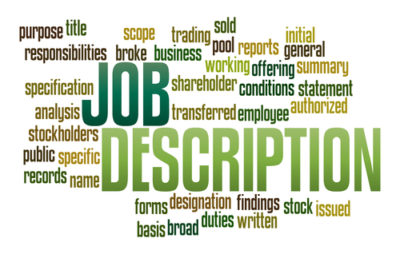
Job profiles are one of the most important parts of a HR System. The information captured by the Job Profiles will be used for all Human Resource Management Systems, i.e. Recruitment and Selection, Performance Management, Career Management, Training and Development, etc.
What is a Job Profile?
It consists of two distinctive parts:
- An output profile describing the job results produced by individuals, group of individuals, job families/clusters of defined disciplines.
- A competence profile describing the specific knowledge, skills and attitudes/values that will enable individuals to deliver the job results required.
Job profiles can be used for purposes, i.e. organisation design and development, recruitment and selection, assessment and HR development, etc.
Job description/profile is a list of the general tasks, or functions and responsibilities of a position. Typically, it also includes to whom the position reports, specifications such as the qualifications needed by the person in the job, salary range for the position, etc. A job description is usually developed by conducting a job analysis, which includes examining the tasks and sequences of tasks necessary to perform the job. The analysis looks at the areas of knowledge and skills needed by the job. Note that a role is the set of responsibilities or expected results associated with a job. A job usually includes several roles. The job description might be broadened to form a person specification.
Purpose
The objective of a job description is to have a clear outline of duties and responsibilities to make the screening process as direct and focused as possible.
Job descriptions may have the following elements:
- improvement cooperation by giving all members of the organization insight in existing responsibilities/roles,
- enabling career moves within the organization,
- determination of amount of pay per function,
- increase of results by specification of responsibilities and key performance indicators,
- development of job owner by specification of competences, and
- may include the phrase "perform other duties as assigned".
Click here to view a video that explains how to develop Key Performance Indicators (KPIs).
Why Job Profiles?
Job profiles are Job Based Job Descriptions. Unlike traditional system used for describing work that were focused on the activities that people have to perform to be successful, a Job Profile focuses on the outputs of results of work that people are responsible for. This is accepted internationally as the more acceptable way of describing work, allowing for new and creative ways of working while still maintaining and preferably improving on the quality of work produced.
Click here to download an example of a job profile/description.
Key Performance Areas

What Is A Key Performance Area?
A performance area or key performance area (KPA) is a measure of performance. Such measures are commonly used to help an organization define and evaluate how successful it is, typically in terms of making progress towards its long-term organizational goals. KPAs are typically tied to an organization's strategy using concepts or techniques such as the Balanced Scorecard.
But it is necessary for an organization to at least identify its KPAs. The key environments for identifying KPAs are:
- Having a pre-defined business process (BP).
- Requirements for the business processes.
- Having a quantitative/qualitative measurement of the results and comparison with set goals.
- Investigating variances and tweaking processes or resources to achieve short-term goals.
Start by identifying the Key Performance Areas. Please note that these must be outcomes/results based. You must group specific tasks together in bigger categories.
For example, in the case of a secretary: filing, typing, answering the telephone, taking messages, managing diary etc. can all be grouped together as ‘administrative support’.
Depending on their level, an individual staff member should have no more than 3-7 KPA's. Make sure that all job functions and responsibilities are covered under the agreed KPA's. It is therefore important that the first line manager know what is expected of him/her by ensuring that he/she understands theses KPA’s.
This is a very important phase. The performance and development of every single employee will be affected on an annual basis by the details agreed to during this discussion. Eventually the first line manager will be rated according to his/her performance in accordance with his/her individual performance plan. Most importantly the appropriate KPA's must be identified for each individual. KPA's must cover the complete spectrum of an individual's functions and responsibilities. Similar positions will therefore have similar KPA's. The next step will be to set SMART objectives for every KPA.
Objectives For Each KPA
The next step is to formulate performance objectives that will lead to the achievement of the agreed KPAs. For each KPA you could potentially have between 3 and 8 performance objectives. Objectives must be specific, measurable, achievable, and realistic and time bound.
We talk about SMART objectives:
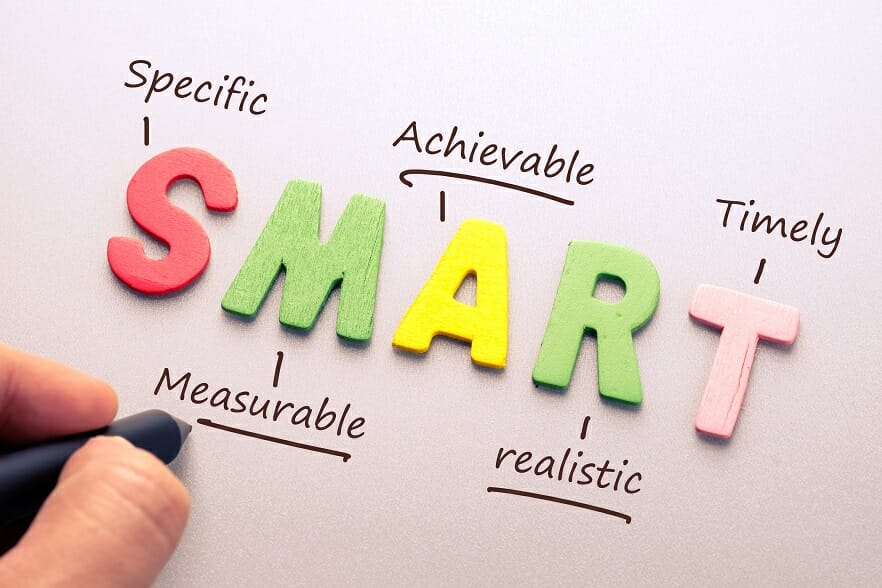
Objectives are required to give direction and purpose to activities. Having an objective allow individuals some opportunities to use their initiative in an appropriate way, rather than just doing a task without being able to apply the intelligence to do it better or to adapt to changed circumstances.
Click here to view a video that explains the SMART objectives.
Specific:
What is the exact scope of the objective? What is included and what is not?
What might be thought to be included but is being done by someone else?
What must be done with the outputs?
Measurable:
What measures will be used to know that the objective has truly been reached? When and how often will the process be measured? What measurement tools can be used to determine success? What format must the output take?
Achievable:
A delegated impossibility is still impossible! If there is doubt over whether the objective is achievable, then the first part of the process should be either to test feasibility or to identify what would have to be changed in order to make the rest feasible.
Realistic:
What is a realistic task for a functional expert to undertake in a week, may not be realistic for a junior joiner in a month? A series of roll-out meetings might be scheduled in two weeks, but clashes with public and personal holidays could mean that a month will be required. The test for a good objective is that it always deals with the reality of how long it will take to do things, rather than how long we would like it to take if we could ignore inconvenient facts.
Time bound:
An objective without a clear specification of its timing priority is likely to be put at the bottom of the list. It will not get done. The simplest way to ensure that an objective will be achieved is to agree on a realistic deadline, even for objectives that are not time critical for success.
Recruitment Techniques
Once you have identified the technical skills and job attributes you are seeking in the new fist line manager, you should consider the most effective way to identify and assess these in candidates. Go over the position description, point by point, and ask yourself, "How best can I learn about the applicant's ability to perform this function?"
The job interview will be a primary source of information about applicants. However, it may not be the best source for some information. A job reference may be the most effective way to learn about dependability, follow through, and ability to get along with co-workers written application materials may provide insight into educational background and general written communication skills.
Reference Checks
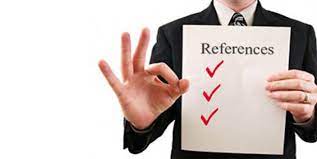
Completing reference checks is a critical part of the selection process. Information you have received in an interview is biased and typically includes only what the applicant wishes you to know. A thorough reference check may produce additional information to help insure that the most suitable candidate is chosen as the new first line manager. It is a way to clarify, verify and add data to what has been learned in the interview and from other portions of the selection process. Never reveal the information received from a previous employer to the candidate. This information should be kept confidential or your sources for references will dry up quickly. If the new manager is chosen from your current pool of employees, this will not really affect you. You know the person and his/her competencies.
It is however, always good to confirm what you already know by checking with his/her immediate current supervisor.
Background Checks
Background checks are a critical component in hiring. When it comes to your business, you cannot afford to make a poor hiring decision. In fact, for most businesses, one bad hire can make the difference between success and failure. Effective background checks mitigate your risk of hiring objectionable, or even dangerous, employees.
Interviewing
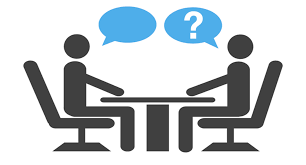
The purpose of an interview is to elicit information from an applicant to determine his or her ability to perform the job. Successful interviewers learn how to ask the right kind questions, how to keep the applicant talking about relevant information, and how to listen.
Much of what is learned about applicants in an interview is based on their past experience. Past performance is our best indicator of future performance. This does not mean that someone who had performed poorly in the past cannot improve in skills and attitude. Generally, however, you can see a trend in performance through several jobs or assignments. Sometimes interviewers assume that a candidate who has done something has done it well or that longevity on a position is a sign of success. These are not well-founded assumptions! A reference check can verify the quality of the work performance.
A person(s) doing the interview acts as a “recruiter” and is a gatekeeper of the organisation because he/she is responsible for finding the employee with the desired talent and skills. Part of that process entails facilitating the interviewing and hiring process for the specific position. Typically, a “recruiter” or human resources representative conducts a recruitment (or screening) interview to ascertain whether or not candidates are qualified and then recommends the best candidates to the hiring manager for in-depth interviews. There are a number of common techniques that can be used in the recruitment interview, yet implementation should vary by company.
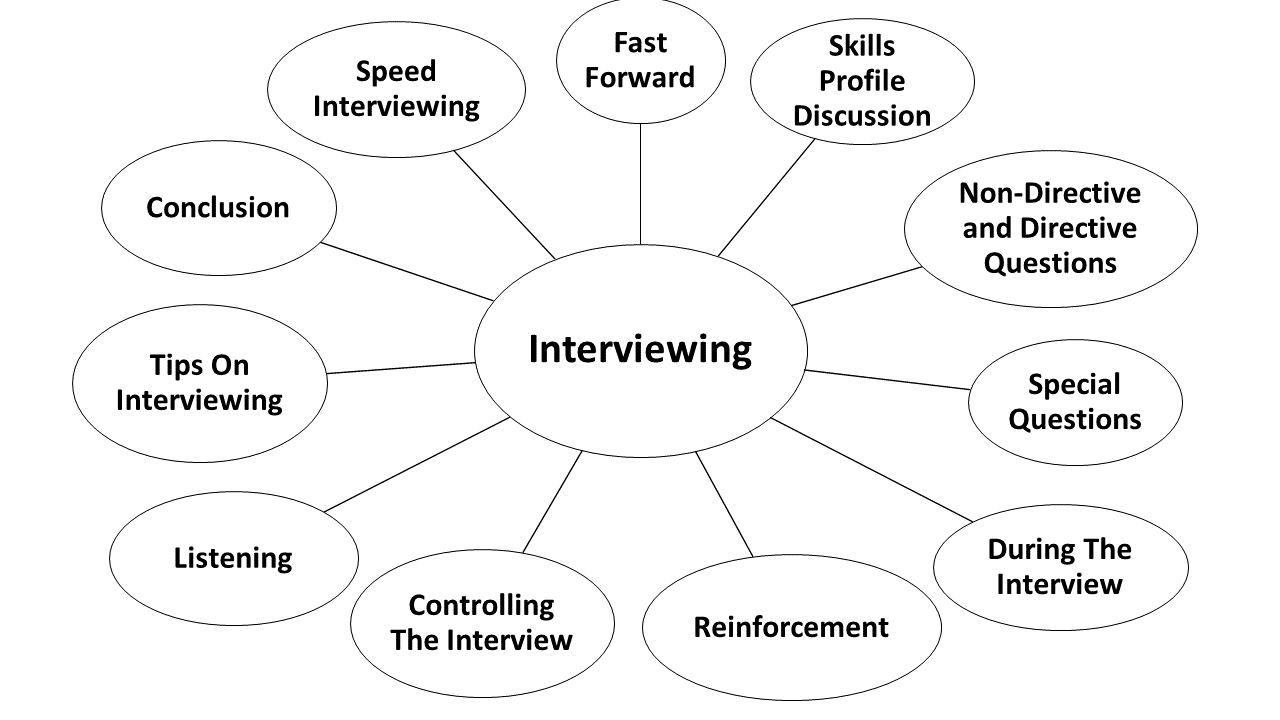
Speed Interviewing
Seasoned applicants usually know that interview questions sometimes tend to be the same and are familiar with the "suggested" answers. Keep applicants on their toes and require them to think on their feet with speed interviewing. Speed interviewing entails asking applicants to answer questions or describe things about themselves in a specific amount of time. Examples include: "In one minute, tell me why you think you are the most qualified" or "List your top three organization techniques in 30 seconds." Depending on the number and types of questions, speed interviewing is most effective over the phone because the recruitment interview may only last 10 to 15 minutes. However, holding the interview in person can be effective in order to physically observe how applicants work under pressure.
Fast Forward
Most applicants can tell you where they have been and where they are with their experience and training. But how many can tell you where they are going? Ask applicants to describe what position or career they see themselves retiring from and explain what roles or positions they intend to hold up until that point. Applicants who can answer this easily have taken some time to think about their career and how working at your organization can fit into their plan. Applicants who have difficulty with this question may only be focused on getting a job for the moment.
Skills Profile Discussion
Because the hiring manager will ask more in-depth questions, a recruiter can choose to do a basic skills profile discussion. A skills profile involves assessing what basic skills the applicants have that are required for the position. Applicants can also elaborate on other skills or experience. This technique is more casual and is mainly a conversation that can be done in person or over the phone.
Non-Directive and Directive Questions

How you phrase a question can affect the type and amount of information you get from the candidate. The main characteristic of non-directive questions is that they do not give the applicant any indication of the desired answer. Structurally, the questions are in the news reporter's style of who, what, when, where and how. Often, they begin with the words "describe" or "explain". Examples of non-directive questions include:
- What do you consider to be the most important responsibilities of an office manager?
- Why does this position interest you?
- How has your background prepared you for this position?
- What types of equipment did you operate regularly on your job at XYZ Company?
- Describe your experience with word processing on your last job.
You may need to ask follow-up questions if the responses to your questions are unclear or incomplete. Clarify and verify any piece of information you do not understand by asking the candidate to explain his or her answer again or to elaborate on the given answer.
- Can you tell me more about that?
- Could you give me an example of what you mean?
- What makes you feel that way?
Directive questions are useful for drawing out specific information. In direct questioning, the interviewer asks, directs, or guides the applicant to specifics. Often, these questions result in a "yes"; or "no" response. Examples of directive questions include:
- Do you currently have a Limited Maintenance Electrical license?
- Are you still employed at XYZ Company?
- Can you set up a computer spreadsheet using Excel?
Special Questions
There are several types of questions that can elicit important information as well as add interest and variety to your interview.
A good technique to learn about an applicant's problems solving skills and judgment is to ask "situation-problem" questions. Create a scenario that is common on the job and ask the applicant how they would handle it.
Another type of information that is frequently asked of applicants is self-evaluative information. One type of question asks about the applicant's likes and dislikes. Self-evaluation questions are also a good way to learn about an applicant's perception of their strengths and weaknesses. Keep in mind, however, that the answers are highly susceptible to different interpretations.
Examples of self-evaluation questions include:
- What did you like best about that job (class, teacher, supervisor, etc.)?
- How would your last supervisor rate your ability to deal effectively with the public?
- What do you see as your strengths? Weaknesses?
- Why were you the one promoted to lead worker on that job?
"Behaviour description" questions can be a powerful tool in an interview. This type of question asks the applicant to describe as closely as possible the actual behaviour that went on in a particular situation. The use of superlative adjectives (i.e. most, least, best, worst, toughest, etc.) tend to stimulate specific events in the mind of the interviewee and therefore makes it easier to respond. As with other types of questions, these should be based on essential functions of the job you are filling.
During The Interview
After you have developed the questions you will ask of each applicant, it is recommended that you develop a form that includes the questions, interviewer name, date, name of applicant, position being filled. The form should have plenty of room for noting responses to questions, follow-up questions, and space for additional comments. Each interviewer should have an interview form for each applicant.
Some interviewers find that they spend a lot of time in interviews describing the position and providing general information for applicants. Think about what you want applicants to know about the job, your department and so forth. Instead of sharing information verbally in each interview, it may be more efficient to provide written materials for applicants. The focus of the interview can then be on the applicant and their qualifications.
When calling applicants to schedule interviews, let them know who will be present during the interview and the approximate duration. Schedule the interview in a room that is accessible to people with disabilities and free of interruptions or other distractions.
The first step of a successful interview includes building rapport with the applicant. Introduce interview panel members including their title and relationship to the position being filled. Let the applicant know that they will be given the opportunity to ask questions at the end of the interview.
Reinforcement
A good interviewer will be an active listener and use both verbal and nonverbal cues to encourage the applicant to divulge pertinent information. Nonverbal skills include smiling, nodding your head, or leaning forward in your chair. Another nonverbal cue is silence. It is an effective tool to indicate to the candidate that more information is desired. If the candidate does not offer additional information, you should provide verbal cues or ask for the information directly.
Controlling The Interview
Sometimes an applicant may digress in their response or may start to repeat what they have said previously. In these instances, it is important for the interviewer to take control of the interview. When an applicant starts to digress, it is generally a good idea not to cut them off immediately. The applicant may be using this time to relax. In addition, this rambling may provide valuable data by giving some indication of the person's ability to organize his or her thoughts or communicate effectively. If the candidate strays too far afield, or begins repeating, it is your responsibility to bring them back on course.
Listening

Good listening skills are an essential part of good communication and thus are very important in interviewing. Since the purpose of an interview is to determine the applicant's knowledge, skills and abilities as they related to the essential functions of the job, it is important for the applicant to do most of the talking; you cannot listen while you are talking. There are several techniques to enhance your listening abilities.
- Empathize with the other person. Try to put yourself in the applicant's place.
- Ask questions when you do not understand.
- Concentrate of how something is said. We frequently concentrate so hard on what is being said that we miss the importance of emotional reactions and attitudes. A person may be communicating more through emotions than the actual content of the words.
- Do not interrupt too soon. Give people time to express themselves.
- Focus your attention on the other person's words, ideas and feelings related to the subject.
- Look at the person and attune yourself to their nonverbal communication. Watch face, eyes, hands and posture.
- Avoid distractions. Put down any papers, pencils or other items that can distract your attention. Try to control outside noise levels and interruptions when you are trying to listen.
- Be aware of your emotions and prejudices. Push your worries, fears and problems outside the meeting room. Control your anger or other emotional reactions to the other person.
- Avoid jumping to assumptions. Do not assume that others use words the same way you do; that they did not say what they meant, but you know what they meant; that they are avoiding looking you in the eye because they are telling a lie.
Tips on Interviewing
Here are quick tips to help keep you in control during an interview:
- Maintain objectivity. Recognize when you feel either too relaxed or uncomfortable-keep your buying switch in the "maybe" position.
- Don't start the actual interview right away; chat or take a walk together instead. This will help minimize emotions and set up the framework for a good dialogue.
- Use a pre-planned, structured interview. Write down a few performance-oriented questions to ask right away, whether you like the candidate or not.
- Measure your first impressions again after 30 minutes. Compare with your original feelings and evaluate your reactions.
- Change your frame of reference: ask tougher questions if you like a candidate, easier ones if you don't.
- Listen four times more than you talk. The interview isn't a casual conversation - it's a fact-finding expedition. Get a page of notes for each of the candidate's accomplishments.
- Treat the candidate as a consultant, someone you're paying to listen to. We always listen more carefully to those we consider experts.
- Talk about real work instead of hypothetical issues. Accuracy will increase if the interview is more like a problem-solving session.
- Use a panel interview to minimize emotional response. With less worries about a one-on-one relationship, you can get to the truth faster.
Conclusion
A good way to improve your questioning technique is to experiment. Practice your phrasing of questions prior to conducting interviews. Add some special questions to your interviews and evaluate the types of responses you receive. Critique each interview to determine how to improve your style. Good questioning skills can definitely enhance your interviewing success.
Making A Hiring Decision
After completing the selection process including evaluation of written materials, interview, work samples (if used), and reference checking, it is now time to review all information gathered about your applicants. It is your task to rate job-related skills and the candidate's fit with your department. Match applicant data with the skills and qualities identified at the beginning of the selection process. In most cases, the basis for selection decision should be guided by the candidate's predicted skill in doing the job.
If it is impossible to make a selection at this point, you may want to consider scheduling an additional interview or conducting additional reference checks. If you feel none of the applicants are qualified, you may choose to re-recruit. The employment or HR manager is available for consultation.

Documentation
Once you have selected a top candidate for a classified position, you should notify the Employment or HR Manager.
Supervisors are responsible for maintaining all documentation related to a job search. This documentation helps protect the organisation in cases of complaints or charges of discrimination and also provides the framework for your next search.
Documentation should include items related to the vacancy: position description; recruiting announcement; copy of ads (including where and when they were placed); list of recruitment sources; names of search/interview panel members. Documentation must also include things related to all applicants: applications; resumes; reference letters; supplemental questionnaires and rating forms; interview notes (include the names of note takers); reference check notes; documentation of work samples. In short, document everything you take into consideration when making the hiring decision.
